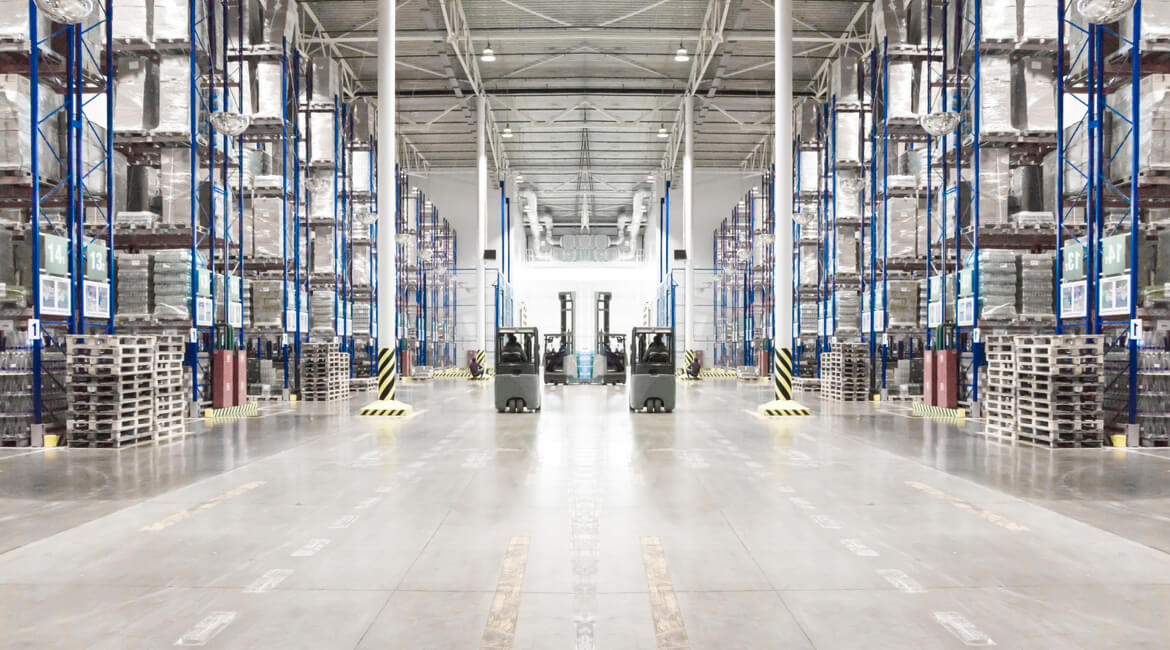Material handling: how to speed up the execution of missions

Efficiency in material handling and the (correct) management of logistics processes are key elements for the success of a modern company, in whatever sector it operates. Two concurrent and converging forces are the ones that lead, in fact, the warehouse into the spotlight:
- the affirmation of production models – such as lean and just-in-time – which rely on extended distribution chains and hyper efficient cargo handling;
- the delivery war driven by the progressive increase of online purchases, that is played on increasingly reduced fulfillment times and orders delivery.
In this context, the Amazon model paved the way. A system that, along with other important competitive advantages, has an actual unique selling proposition right in the innovative management of logistics processes and cargo handling.
The incredible performances of Amazon warehouses can be explained by the massive use of robotics and AI (Artificial Intelligence), as well as unconventional strategies for goods storage. The result consists in huge profits and levels of efficiency that are difficult to match. It suffices to think that, in 2019 and in the United States alone, the company delivered about 1.9 billion packages.
Besides the blatant – and perhaps off the charts case – an effective material handling remains crucial for companies of all sizes. A good help in this case comes from digital logistics. Different tools and technologies guarantee, in fact, operational efficiency and automation possibilities.
According to a study by the McKinsey Global Institute, in fact, logistics and transport represent the third sector for automation potential of the processes among all throughout the work activities.
Inside a warehouse, then, elements of digital logistics can greatly improve the work. In particular, in the missions planning and execution.
Material handling: efficiency in the execution of missions
A more “transparent” warehouse makes operations within it more efficient. In other words, the more thoroughly you know not only the location of the goods, but also the physical structures that house them, the more quickly (and accurately) you can proceed with their handling.
Assisted modeling technologies can, then, virtualize the physical space in which they operate, producing a warehouse model with high levels of detail. This helps operators, for example, to locate goods from the lane to the shelf, locate handling equipment in real time, map distances and travel times.
Using this technology makes it easier to manage in a cost-effective way the assignment and the execution of the missions. Finding the fastest routes to carry out operations, avoiding vehicle clogging or bottlenecks, locating the goods to be handled with extreme precision.
Another important tools, in this perspective, are the tracking sensors. Sensors which, with different technologies, can locate both the goods and the handling equipment or operators. Their use allows better coordination of warehouse traffic and reduces risks for workers.
Following in real time the execution of a mission improves the timing but also the quality. This allows not only for a time reduction, but above all it leads to a more rational use of resources and less burdensome workloads for operators.
The digitalization of handling operations has positive repercussions on all types of missions, whether it’s storage, picking, cross-docking or other. Even at the higher level – which is planning logistics processes – digital improves many things, and that happens when a profitable integration between the two levels takes place.
This occurs, for example, when the new tracking tools and the execution of missions communicate effectively with the logistics process management infrastructure, typically through the WMS (Warehouse Management System).
Precision in planning the logistics processes
Efficiency in cargo handling, in fact, is not only achieved by improving the execution of missions, but also and above all through more effective planning.
Valid digital solutions emerging at this stage are the software platforms that exploit artificial intelligence algorithms to optimize logistics processes. Tools that, by analyzing location data, can rationalize and organize the waves of missions.
With such tools you get a significant efficiency in times, costs and quality of operations. Missions are organized by monitoring and managing data in real time: the routes to be traveled without load get reduced, missions get assigned according to current availability, any failures or misalignments get promptly resolved.
The emphasis here is on the idea of real time management: in fact, the progress of the missions can be monitored extensively, and any corrections made promptly.
The metaphor is that of a chess game played against the computer in which the latter due to its computational power in the almost immediate response time makes the best move, after analyzing the possible future consequences.
The result is a more dynamic and efficient control system for cargo handling. From here it’s also possible to start to redefine storage and management strategies, while further optimizing activities.
Technology thus becomes an important ally for the management of material handling operations and, specifically, for the execution of missions.
